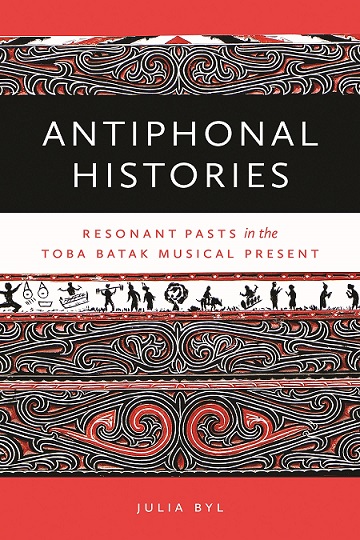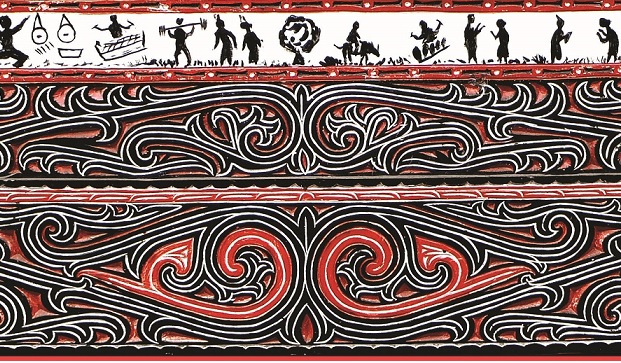Julia Byl’s ethnographic study reveals a musical tradition formed by its interactions with other cultures and musical influences
Margaret Kartomi
The Toba Batak are well-known as a very musical people who like to sing together in their coffee shops and have produced many famous groups and artists, such as the popular singer Gordon Tobing. Some of their popular folk songs – such as ‘Sing Sing So’ – have become so widely known that they have acquired national status. Commercial recordings of Batak Toba songs are widely available in Indonesia’s record stores.
However, their ancient traditional musical traditions are much less known and understood. Unlike the gamelan music of Central and West Java and Bali, detailed ethnomusicological research of Toba musical genres has been minimal, partly due to the lack of infrastructure and difficulty of travelling around its extensive terrain. Sustained research in Toba areas began as late as the 1970s, a half century after Javanese and Balinese music research began. Prior to that only limited documentation of this musical tradition had taken place.
Existing scholarship on Toba Batak music
As early as 1909, German writer R. von Heintze described the religious functions of some of this music in the largely Lutheran Toba Batak area. Some years later, in 1939, Claire Holt and Rolf de Mare filmed some of the dances in the Bataklands.
 A representative collection of Toba archival music recordings was made only in the 1970s and 1980s by the German scholar Artur Simon published articles and issued the music on compact disc with the Museum fuer Voelkerkunde in Berlin. Philip Yampolsky released a selection of music of Toba and other Batak groups on the Smithsonian Folkways label in 1982. Another German scholar, Rainer Carle, wrote on Batak opera in the late 1980s and a Japanese scholar, Yoshiko Okazaki researched Toba Batak music in the Catholic churches in the 1990s. It was not until quite recently, in the early 2000s that a Batak scholar-musician, Mauly Purba, published on the gondang sabangunan ensemble music and its use in church settings.
A representative collection of Toba archival music recordings was made only in the 1970s and 1980s by the German scholar Artur Simon published articles and issued the music on compact disc with the Museum fuer Voelkerkunde in Berlin. Philip Yampolsky released a selection of music of Toba and other Batak groups on the Smithsonian Folkways label in 1982. Another German scholar, Rainer Carle, wrote on Batak opera in the late 1980s and a Japanese scholar, Yoshiko Okazaki researched Toba Batak music in the Catholic churches in the 1990s. It was not until quite recently, in the early 2000s that a Batak scholar-musician, Mauly Purba, published on the gondang sabangunan ensemble music and its use in church settings.
This, the first book-length ethnography of Toba Batak music, dance and theatre performance, is therefore most welcome. Byl presents this musical and cultural heritage as a legacy of the Toba’s global history as well as a vital expression of their local experience. She points to the fact that the Bataklands have been located on an important international trade route over the past one and a half millennia, and so been exposed to considerable contact with neighbouring Malays, Indians, Perso-Arabic peoples and – through colonisation and Christian proselytisation – Europeans. Drawing on her extensive collection of oral histories and local myths collected in the field Byl’s show how Toba musical performances document their diverse roots.
Multiple musical pasts
The title of the book reflects its main argument, that is, that there are many histories of Toba music, with genres ranging from the centuries-old tuned drum and gong-chime ensembles of former Hindu times to nineteenth century Lutheran hymns and brass band music through to global musics. She gives as an example the adoption of Jimmie Rodgers’ yodelling techniques in local folk and popular songs.
The book adopts what its author calls a ‘hybrid methodology’, combining a vertical/historical exploration of the contemporary music traditions with a horizontal/chronological analysis of ‘the place where historiography meets ethnography’. Byl’s objective is to discover ‘what is behind and above the traditions, not just how they unfold chronologically’.
The first part of the book uses family histories to reveal the ways in which Toba musical and cultural practices have engaged with the global and local past. Byl describes how the Toba peoples sing stories of their ancestors to reveal what they know about the Indic and the Islamic pasts as well as the colonial and the national. In the second part of the book, Byl investigates the Toba habit of looking back to interpret the present. Focusing on select performances, she shows how multiple Toba histories are revealed in the performative moment through the interpretations of the participants.
The book is highly recommended as an original and vividly written reflexive autobiography that is largely based on personal reflections and stories of the Toba people whom Byl has met over the course of her fieldwork.
Margaret Kartomi (margaret.kartomi@monash.edu) is Professor of Music at Monash University’s Sir Zelman Cowen School of Music and author of Musical Journeys in Sumatra (2012, University of Illinois Press) and many other publications on the music of Sumatra, including the Mandailing Batak.
